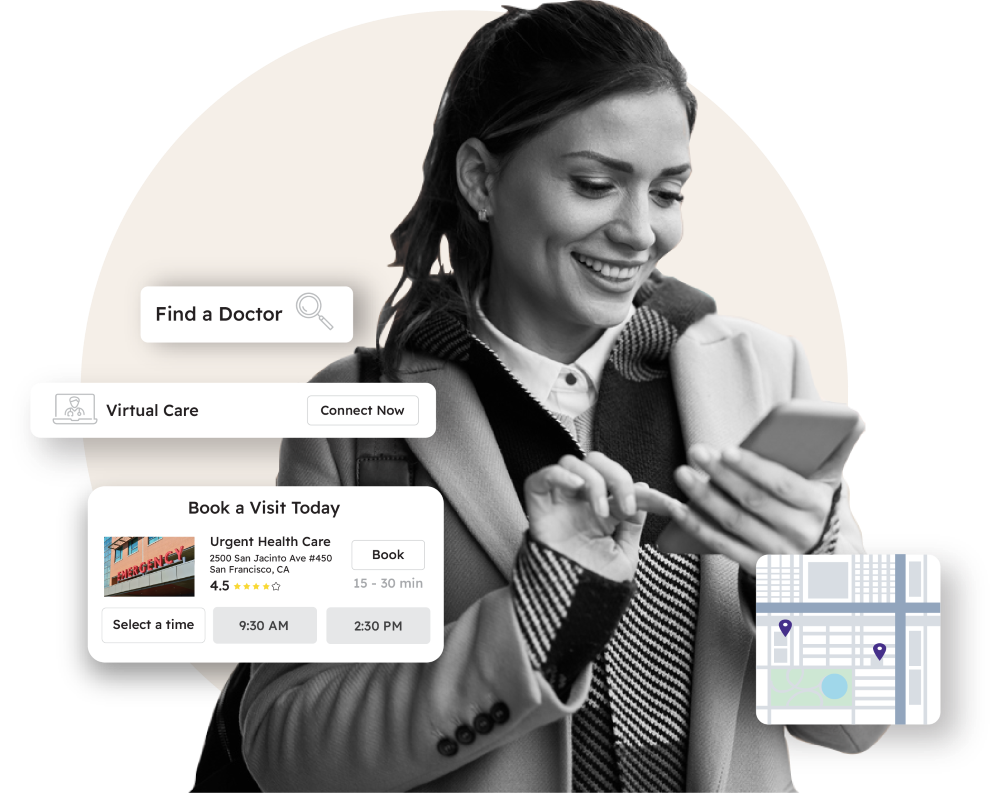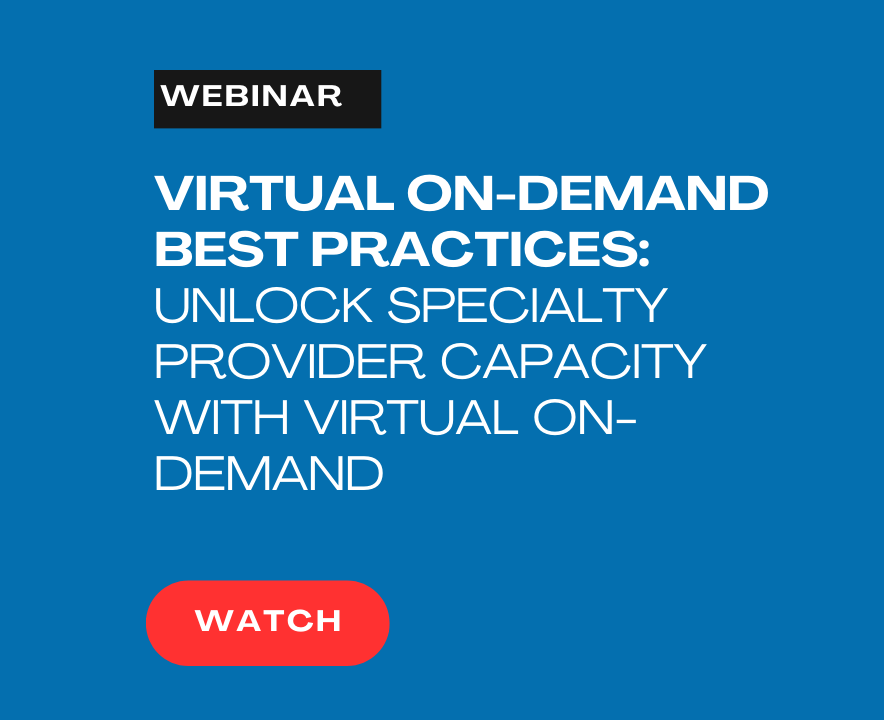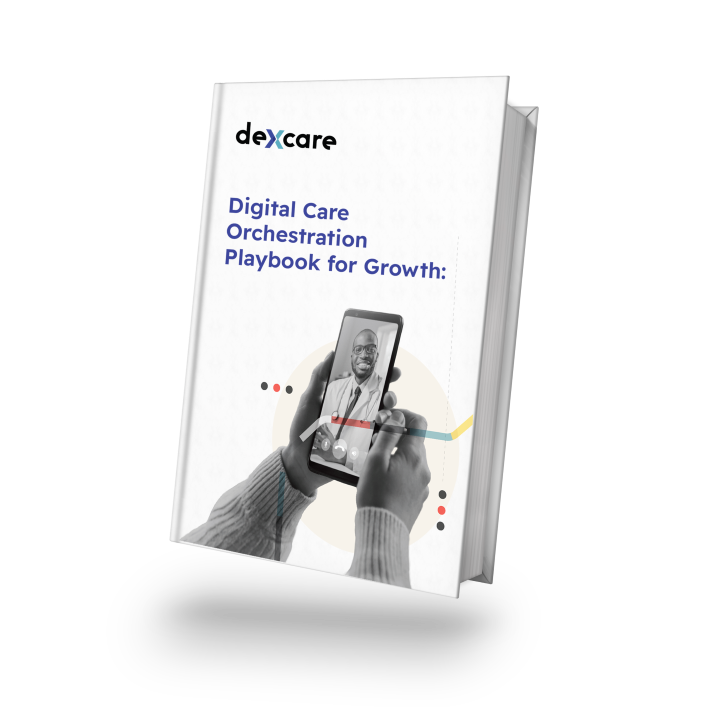Reduce scheduling friction. Meet healthcare customers where they are.
Every industry relies on digital channels to attract, capture, and acquire customers. Healthcare is no different. And creating less-digital friction directly contributes to growth, and consumer satisfaction.
Healthcare websites, unfortunately, are loaded with friction. From navigating multiple directories and dead-end searches to searching for availability, the healthcare journey is cumbersome.
Consumer acquisition often starts with Google. It’s where patients research providers, read articles, and discover what your healthcare network offers. And the pages consumer discover from Google are likely articles, locations, service information, and condition pages. These landing pages — your top of funnel — is how consumers leap into the care journey, hopefully drudging through directories to find available care.
Eliminate barriers to get care
Your landing pages don’t have to be dead ends, and a missed opportunity to acquire customers.
A powerful way to optimize points of discovery is to pair scheduling and availability with the pages customers encounter most often. By moving the booking decision to the first page customers find — from Google — consumers are presented with real-time care options at the onset of the visit.
For example, one can imagine a consumer who seeks to learn more about mammograms. They begin their journey on Google. And the possible search phrases are vast, and the consumer is likely to discover articles and resources. From “How does a mammogram work” to the latest benefits of on-the-spot or 3D mammograms, the search will return a host of articles. And as a healthcare system, your articles and related resources are bound to surface.
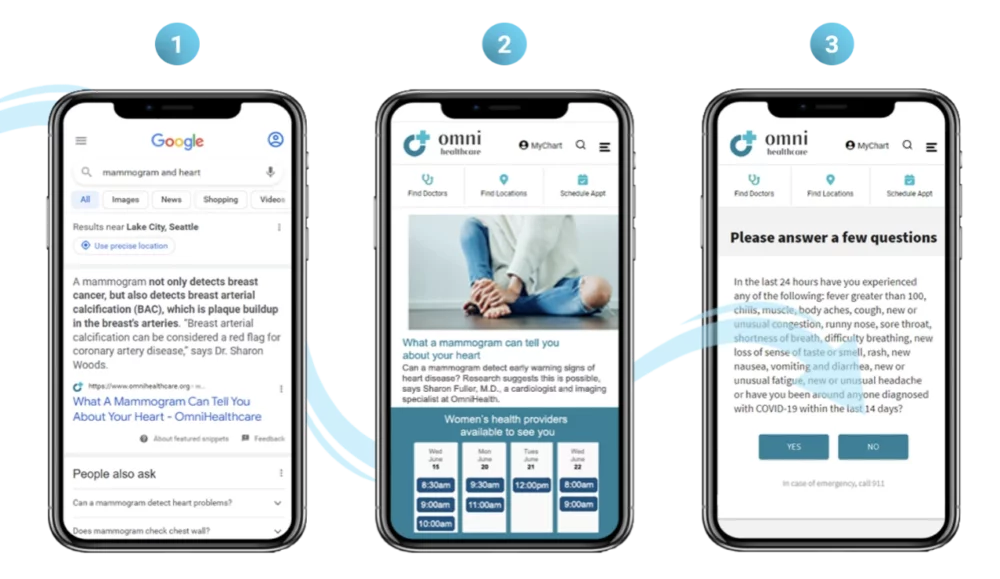
As seen in the example, the customer searches for “mammogram and heart,” and discovers a relevant article. Upon clicking the search-result page, the customer enters the healthcare experience, and instead of solely reading an article, options for care showcase real-time scheduling. And just like that, customers see actionable choices, directly at the onset of their care journey.
Every scheduling step contributes to friction, and loss of customers
The notion of removing steps and delivering a frictionless experience is at the heart of any great website. In e-commerce, for instance, we know that any extra step or delay to purchase, leads to increased abandonment.
In a study, nearly 20% of respondents said they would abandon the e-commerce experience altogether if it took more than one minute to check out. Another 17% said they abandoned an order in the last year specifically because the checkout process was long and complicated.
Simply, each step adds more friction.
Reducing the steps — no matter the action or industry — is a best practice to acquire more consumers.
Scheduling with fewer steps leads to less friction
People want options, and fewer steps. And the more healthcare can incorporate digital best practices, the more satisfied consumers will be. We make it easy to expose scheduling beyond directories to the landing pages that drive in your organic traffic. To be clear, provider and urgent care directories remain critical, but expanding where and how consumers start the scheduling process is part of eliminating digital friction.
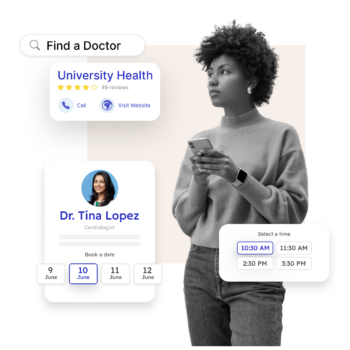
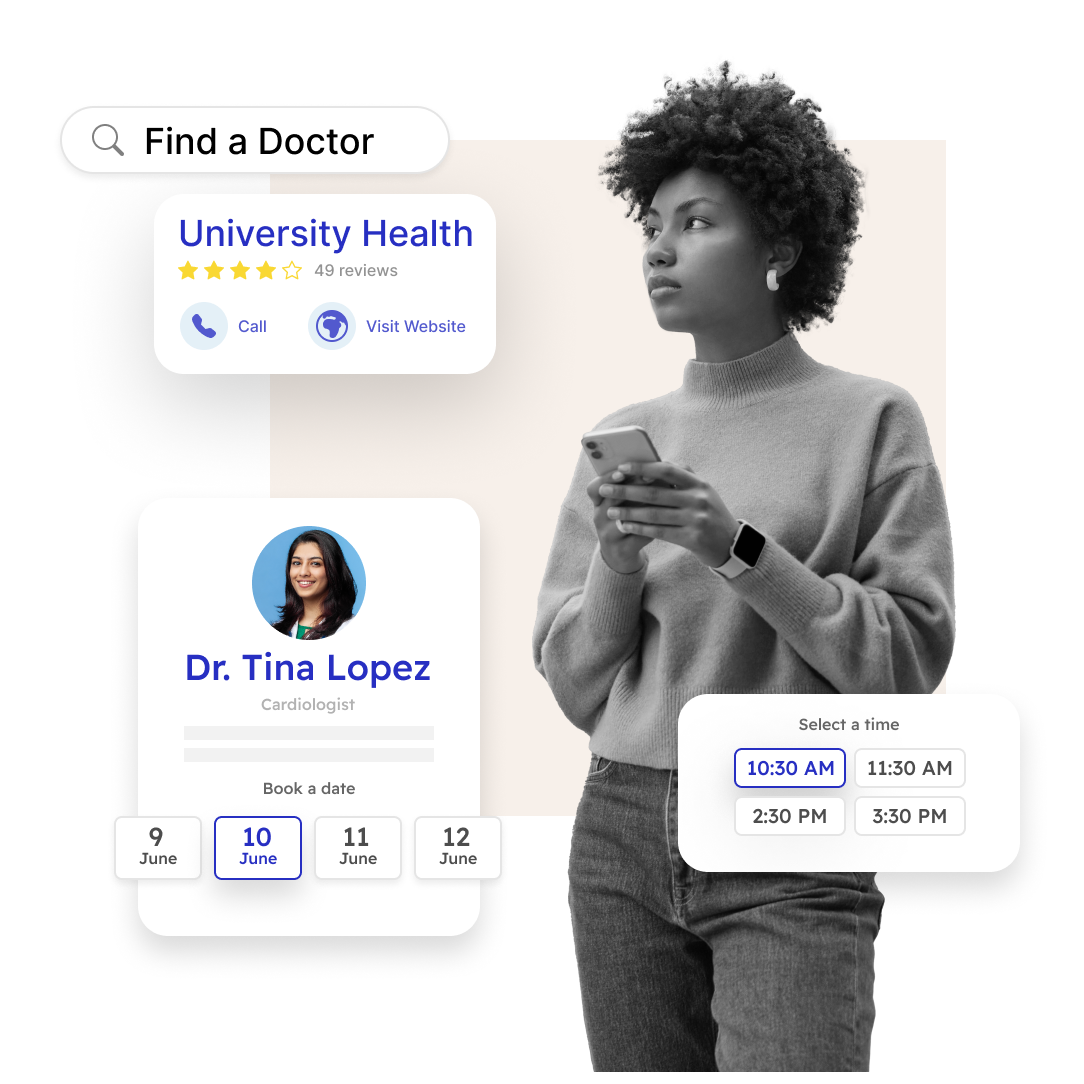
 Veterans Affairs
Veterans Affairs
